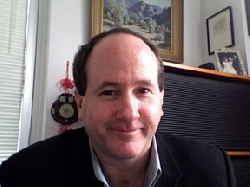
Contact: Nick Zagorski, 443-287-2251, nzagors1@jhmi.edu; Audrey Huang, 410-614-5105, audrey@jhmi.edu; both with Johns Hopkins Medicine Media Relations and Public Affairs
BALTIMORE, June 5 /Standard Newswire/ -- Like hobos on a train, HIV, the virus that causes AIDS, uses a pre-existing transport system to leave one infected cell and infect new ones, Hopkins scientists have discovered. Their findings, published in the June issue of Plos Biology, counter the prevailing belief that HIV and other retroviruses can only leave and enter cells by virus-specific mechanisms.
Photo: Stephen Gould, Professor of Biological Chemistry,
"It appears that cells make HIV and other retroviruses by a naturally occurring export mechanism," says Stephen Gould, Ph.D., Professor of Biological Chemistry at Johns Hopkins. Cells normally export certain membrane-bound molecules to the outside world by means of small sacs known as exosomes. By studying human T-cells under a microscope, Gould, Yi Fang, Ning Wu, and other members of his team discovered what’s needed to qualify proteins for exosomal travel.
"Surprisingly, all that's needed for a protein to get out of the cell in exosomes are the ability to clump together and attach to the cell's membrane," Gould says.
In one experiment, Gould and his team added chemicals to normal human cells that force nearby proteins together into a clump, and this was enough to get them sent out of the cell in exosomes. If they added a tether to force naturally-clumping proteins inside the cell to the membrane, the proteins met a similar exosomal deportation fate.
The major HIV protein "Gag" has both of these properties that cells sense in selecting exosomal cargoes. When the researchers removed the tethers or clumping signals from Gag it could no longer get out of the cell. However, if they were replaced with synthetic membrane anchors and clumping domains Gag regained its ability to get out of cells in exosomes.
Gould speculates that cells may have initially developed exosomes as a quality control mechanism to get rid of clumped proteins, which are generally broken and useless. However, just as retroviruses exploit other cell processes for their own ends, it now appears they rely on exosomes to get out of infected cells and infect fresh cells. As such, drugs that interfere with exosome formation might be one way to inhibit HIV infections.
"Viruses like HIV use pathways we barely recognize, much less understand," Gould says. "Our paper highlights the importance of studying their basic biochemistry and cell biology, which can yield a better understanding of normal human biology as well as identify new avenues in the fight against human disease."
The research was funded by the U.S. National Institutes of Health.
Authors on the paper are Yi Fang, Ning Wu, Xin Gan, Wanhua Yan, James Morell and Gould, all of Johns Hopkins
On the Web:
http://biolchem.bs.jhmi.edu/members/facultydetail.asp?PersonID=670
http://biology.plosjournals.org/




 Sign Up to Receive Press Releases:
Sign Up to Receive Press Releases: